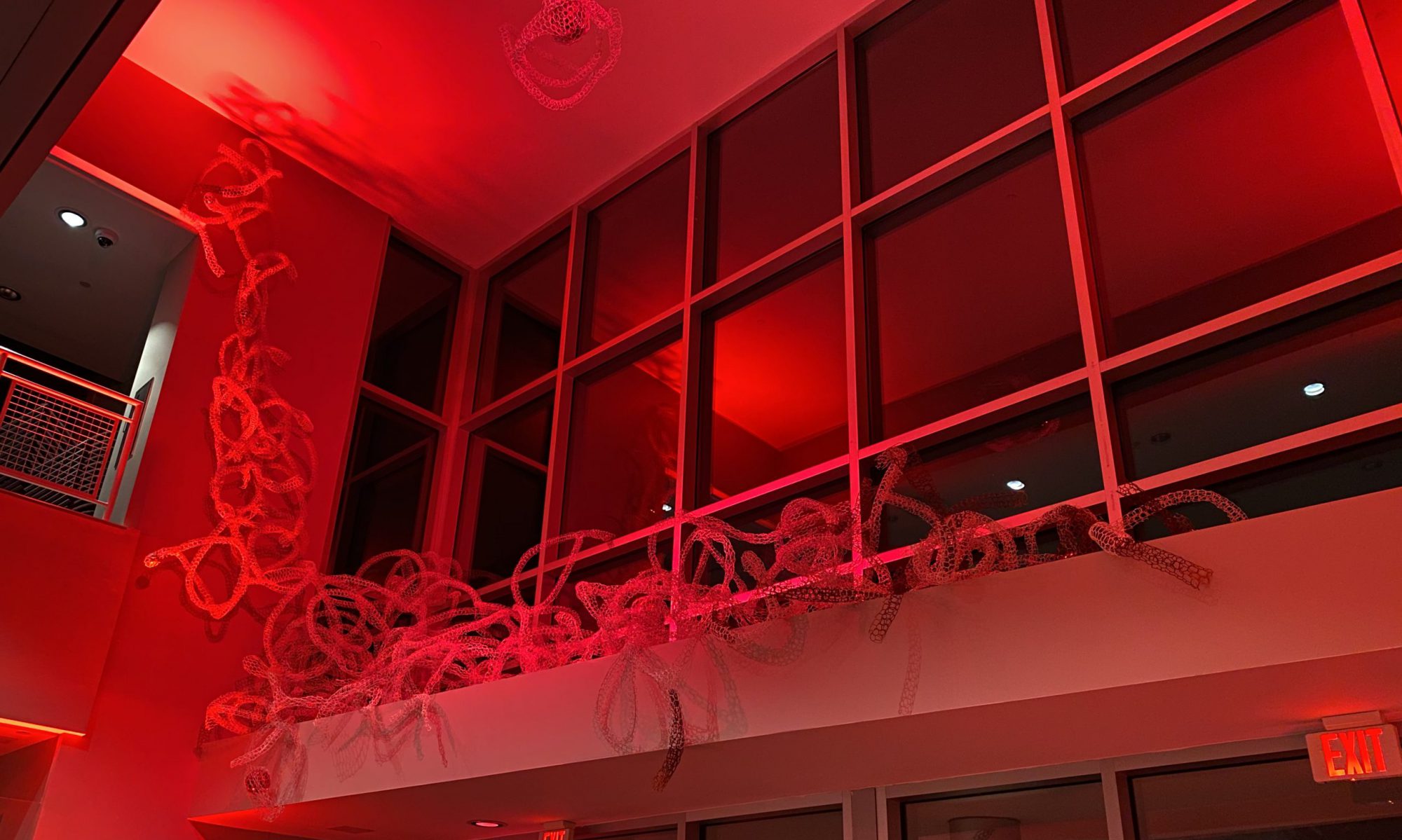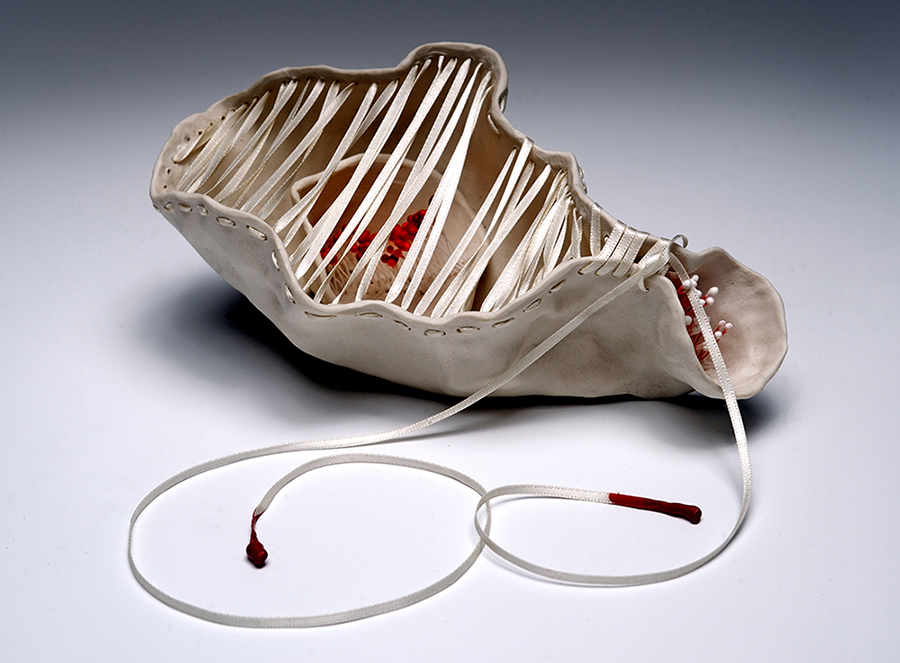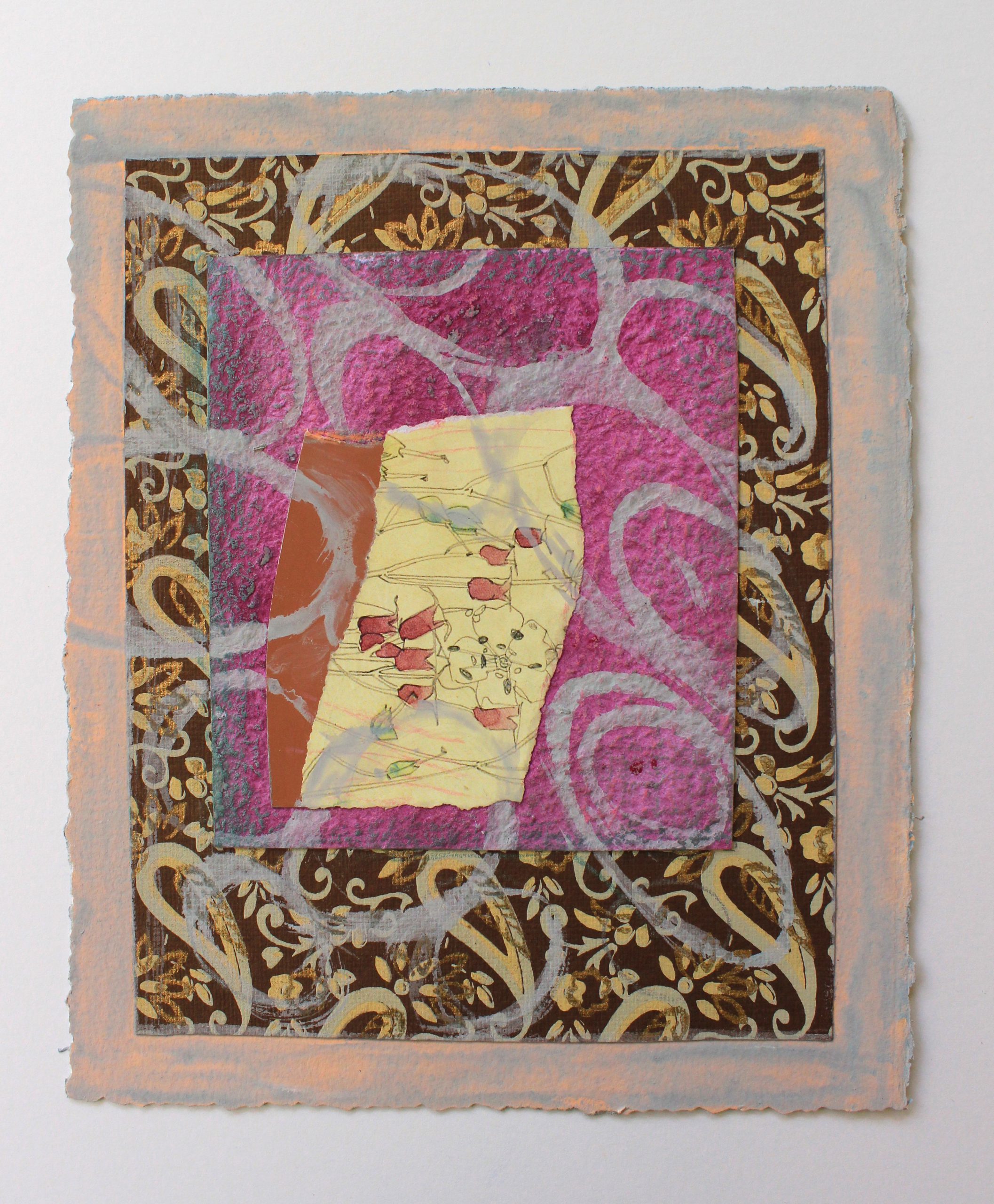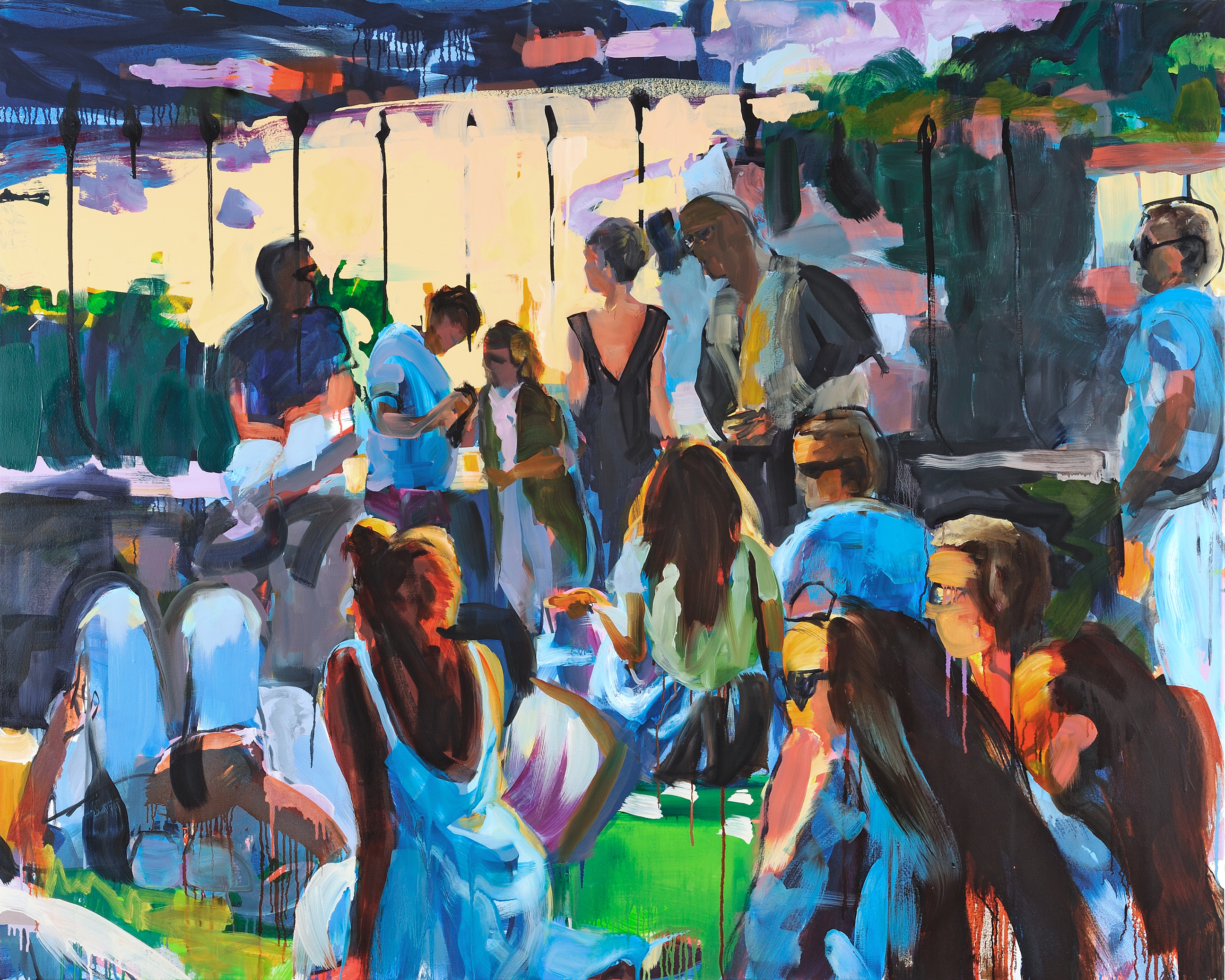The Schlesinger and Fisher Art Galleries web programs are live! We have begun an online gallery program. We have started a podcast series – In this Time: Conversations with Artists – that is available on your favorite podcast app as well as on our blog. View the podcast resource pages and visit our first online exhibition We Are Always in Conversation: Works by Samuel Miranda. Join us this Friday on the Fisher Art Gallery Instagram for a Instagram Live poetry reading with Samuel Miranda.
March 7th, 2020 1-3pm Artist Talk with Kirsty Little
February 29, 2020 1-3PM – Artist Talk with Elizabeth Vorlicek
A Conversation with Sally Kauffman
A Conversation with Sally Kauffman
Chill Out: Paintings by Sally Kauffman
Artist Talks: November 20, 2019, 5-7PM
Forum Gallery: Schlesinger Arts Center
Northern Virginia Community College – Alexandria Campus
When did you know that you were an artist?
As a child I would sequester myself in a secret spot and draw for hours.
Was there a particular experience that inspired your decision to pursue art?
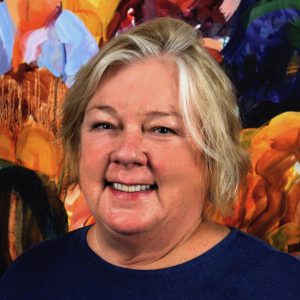 My grandmother taught me to draw and paint as a young girl. One of my favorite memories is sitting by her side watching her paint with watercolors. Her life inspired my own. She was a magical, mystical woman who entertained her family with lavish meals during holidays, especially at Christmas when she dressed as Mrs. Klaus.
My grandmother taught me to draw and paint as a young girl. One of my favorite memories is sitting by her side watching her paint with watercolors. Her life inspired my own. She was a magical, mystical woman who entertained her family with lavish meals during holidays, especially at Christmas when she dressed as Mrs. Klaus.
She owned and operated a therapeutic spa for women as well as an art practice. She painted wonderful images of nature and people. She taught me that I could be whatever I wanted to be.
Are there particular artists or art movements that are an inspiration to you?
Movements and painters amongst the many that influenced my practice from early on include Ukiyo-e artist Hokusai, Venetian School painters Titian, Tintoretto and Veronese, Les Nabis artists Bonnard and Vuillard and Fauvist Matisse. Abstract Expressionism was and remains a major influence. De Kooning, Frankenthaler, Rothko, Pollock, Raushenberg, Johns, Twombly, Mitchell, Krasner, I can’t think of any who did not influence my work. Bay Area Figurative painter Diebenkorn was a revelation to me. Contemporary movements and artists that I currently look at are the YBA (Young British Artists) Cecily Brown, Jenny Saville, Rachel Whiteread and Tracey Emin among many others as well as South African artist Marlene Dumas.
Can you describe your artistic process?
To create the series “Relaxed States” which includes the exhibition “Chill Out”, I discreetly captured images of groups of people lounging and relaxing together using my phone camera. I create digital sketches from the photos by collaging elements and enhancing the color to create a visually dense image. The saturated digital color informs my palette. I mix oil paint and oil painting mediums into a fluid, smooth consistency in small jars, then brush blocks of transparent color directly on the canvas building up multiple layers that afford me flexibility in defining the position and form of the elements. As the forms evolve I respond to the images on the canvas and only reference the digital sketch if I find the need for the original images to inform my own.
Can you talk about how you use visual technologies (computers and software) with your artistic process?
I limit the use of software tools in my creative process to my iPhone and image processing software including Preview, iPhoto and Gimp, all free or shipped with my Mac even though I used many sophisticated tools for 25 years in the tech industry as a user experience designer, graphic designer and art & design director. I’ve resisted integrating digital technology into my art even though I am still fascinated by it, I’m seeking an escape from designing simulated environments and want to live again in the physical world using tangible tools. A good day is when I come home from the studio with paint in my hair and on my face and hands. I use digital tools to create digital sketches in the conceptual phase using snapshots with my iPhone and manipulating the images on the computer. I print the sketches and use them as a reference. The final artwork is produced by hand with paint and canvas.
You have four paintings in the exhibition that were inspired by the summer jazz concerts at the National Gallery in Washington DC. Can you tell us about that experience and what made you want to explore the experience in paint?
 The long answer: after a 20 year hiatus from painting while I worked in the tech industry, I needed inspiration as I resumed my painting practice so I enrolled in a class called “Painting in a Series” at the Corcoran taught by Judy Southerland. Judy reviewed my work and asked me what I was going to paint. I did not know so she gave me a written exercise titled “What Matters” in which you described an activity you care about and how it affects you and others, a social system that interests you and your stance in relation to this system and a condition or question that interests you. I filled it out but still it was unclear to me. So I turned to my private life. My husband and I love to cook and entertain our friends so I started photographing and painting my dinner parties. Out of this grew a series of work centered on groups of people sharing food, swimming and listening to music.
The long answer: after a 20 year hiatus from painting while I worked in the tech industry, I needed inspiration as I resumed my painting practice so I enrolled in a class called “Painting in a Series” at the Corcoran taught by Judy Southerland. Judy reviewed my work and asked me what I was going to paint. I did not know so she gave me a written exercise titled “What Matters” in which you described an activity you care about and how it affects you and others, a social system that interests you and your stance in relation to this system and a condition or question that interests you. I filled it out but still it was unclear to me. So I turned to my private life. My husband and I love to cook and entertain our friends so I started photographing and painting my dinner parties. Out of this grew a series of work centered on groups of people sharing food, swimming and listening to music.
The paintings in the exhibition were inspired by evenings spent sitting in the National Sculpture garden listening to jazz surrounded by the fascinating people who live in DC. I wanted the paintings to celebrate and exude the kind of energy and pleasure that you would find in Manet’s “Le Dejeuner sur l’herbe” and Titian’s painting “The Bacchanal of the Andrians”.
What about your strolls through Porto inspired you? The color and light in the two series of works is very different. How do you use color and light to create the atmosphere in your paintings?
 I visited the Passeio Das Virtudes during the “golden hour” which is the first or last hour of sunlight in a day when the light is soft and warm and the shadows long. This combination of warm colors contrasted with darker cool color defines my typical palette and explains my attraction to the scene.
I visited the Passeio Das Virtudes during the “golden hour” which is the first or last hour of sunlight in a day when the light is soft and warm and the shadows long. This combination of warm colors contrasted with darker cool color defines my typical palette and explains my attraction to the scene.
The paintings inspired from the “Jazz in the Garden” depict the warmer light just before the golden hour. I’m fascinated by paintings that create drama using chiaroscuro, the strong contrast of light or lack of it to define volume in form. Diebenkorn and Hopper’s use of chiaroscuro in their paintings is a good example of this and of course, Caravaggio was the master.
What is that you would like the viewer to take away from their experience of seeing this exhibition?
A collector of a painting in this series recently wrote to me “every time we look at your piece of art we are more delighted.” That is one of the most satisfying aspects of my art practice.
Is there any advice that you would give students as they have made the decision to pursue art?
Define what you want your art practice to be and treat your practice as a profession. This can and will change over time as you mature as an artist and a person. Schedule time for your practice and stick to it even if it involves sitting in your studio and staring at the walls, this is critical to your development. Build a network of your peers by attending local exhibitions and introducing yourself to the artists and gallery owners. Once you have built up that network support your artist friends by attending their art events. Define a social media strategy for yourself. Attend the free lectures at the Smithsonian. Read Art/Work = Everything You Need to Know (and Do) As You Pursue Your Art Career. Rent a studio that hosts open studios and will expose you to other artists and collectors.
To kickstart my art practice after a long hiatus, I studied at the Corcoran in the evenings for 3 years with Judy Southerland who become a mentor for me. (find a mentor) The artists I met in her class are now my peers. I rented studios through which I met different groups of artist friends. I also joined the Studio Gallery, the longest running artist coops in DC, while I had another full-time job. Scheduled annual shows taught me how to prepare and install an exhibit. I learned that I needed to paint when I really didn’t have time or feel like it and how to market my work. I served on the board and learned how to run a gallery. And made more artist friends. I applied for and attended an artist residency at Vermont Studio Center and met an international group of artists. Your network is going to be very important to you. They will expose you to new opportunities and will enrich your practice and life.
What can we expect from your work in the future?
I’m embarking on a big adventure in January. I’m moving to Rome for a year. There are so many things I want to do while I’m there, I’ll be taking workshops, spending lots of time in the museums and galleries and soaking it all in. I’m hoping it will take my work in new directions.
October 19, 2019 2-4PM Art Opening – Sally Kauffman, Jean Hirons, Cathy Abramson and Veronica Szcalus
Please join us on Saturday afternoon October 19, 2019 from 2-4PM for the Final 2019 art openings at the Fisher and Schlesinger Center Art Galleries. We will be celebrating the work of four talented local artists. The artist are Sally Kauffman in the Forum Gallery, Jean Hirons in the Passage Gallery and Cathy Abramson in the Margaret W. & Joseph L. Fisher Art Gallery.
Forum Gallery
Chill Out: Paintings by Sally Kauffman
October 12, 2019 – December 23, 2019
 Kauffman is best known for her abstract yet allusory large-scale paintings that celebrate and exude pleasure. Her gestural brushwork and sensual application of paint reference the figure in landscape. Kauffman draws on personal experiences as a source for her images; Friday Jazz in the Garden concerts at the NGA and recent strolls through Porto provide the setting for the series “Chill Out”. Kauffman captures moments in snapshots and digitally manipulates the composition and intensity of color. The dense, saturated images become the source for the paintings. Almost human scale figures painted in saturated, flowing oil color on large format canvas entice the viewer to engage in their own narrative.
Kauffman is best known for her abstract yet allusory large-scale paintings that celebrate and exude pleasure. Her gestural brushwork and sensual application of paint reference the figure in landscape. Kauffman draws on personal experiences as a source for her images; Friday Jazz in the Garden concerts at the NGA and recent strolls through Porto provide the setting for the series “Chill Out”. Kauffman captures moments in snapshots and digitally manipulates the composition and intensity of color. The dense, saturated images become the source for the paintings. Almost human scale figures painted in saturated, flowing oil color on large format canvas entice the viewer to engage in their own narrative.
Passage Gallery
Winter Light: Pastels by Jean Hirons
October 12, 2019 – December 23, 2019
 Jean Hirons has spent 20 years specializing in the art of soft pastel. Jean’s passion is for the landscape, particularly buildings in the landscape. She began by painting New England houses and rural farms. Since 2015, she has focused on various areas of Washington, DC: Capitol Hill, Georgetown, Chinatown, and Dupont Circle. She finds this subject matter both challenging and satisfying. Composition is always the starting point in any of her paintings and she often looks for abstract shapes. For color, she may use what she sees but, more often, uses color from her imagination. She wants color to be real enough, but not necessarily what was there! Jean also loves complex, broken color and finds pastel to be a perfect medium for achieving this effect.
Jean Hirons has spent 20 years specializing in the art of soft pastel. Jean’s passion is for the landscape, particularly buildings in the landscape. She began by painting New England houses and rural farms. Since 2015, she has focused on various areas of Washington, DC: Capitol Hill, Georgetown, Chinatown, and Dupont Circle. She finds this subject matter both challenging and satisfying. Composition is always the starting point in any of her paintings and she often looks for abstract shapes. For color, she may use what she sees but, more often, uses color from her imagination. She wants color to be real enough, but not necessarily what was there! Jean also loves complex, broken color and finds pastel to be a perfect medium for achieving this effect.
The Passage Gallery exhibit, “Winter Light” displays 6 pastels capturing the moments of one day in winter on the C&O Canal in Washington DC.
Margaret W. & Joseph L. Fisher Art Gallery
Dreams of the Underground: Oil Paintings by Cathy Abramson
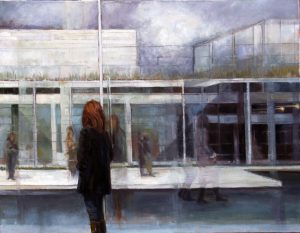 Cathy Abramson’s oil paintings investigate the stories of the city. These representational paintings examine the emotional subtext of change; the connections or estrangement of people in transitional neighborhoods. She sees moments of poetry in the ordinary. Although she paints particular people and scenes, these paintings about daily life in Washington, DC resonate with everyone. Cathy spent two years investigating and painting the neighborhood and people around Kennedy Street, NW. She recorded scenes that are about recent history, change, nostalgia and social struggle; the joys and frustrations of contemporary urban life.
Cathy Abramson’s oil paintings investigate the stories of the city. These representational paintings examine the emotional subtext of change; the connections or estrangement of people in transitional neighborhoods. She sees moments of poetry in the ordinary. Although she paints particular people and scenes, these paintings about daily life in Washington, DC resonate with everyone. Cathy spent two years investigating and painting the neighborhood and people around Kennedy Street, NW. She recorded scenes that are about recent history, change, nostalgia and social struggle; the joys and frustrations of contemporary urban life.
September 7th, 2019 2-4PM, Fall Solo Artist Reception
You are invite to attend a free public art exhibit reception Saturday afternoon, September 7th from 2-4PM.
Our early fall exhibitions are on display now and will run through October 7th, 2019.
Forum Gallery
A Rising Tide Lifts All Boats: Paintings by Andrea Limauro
Passage Gallery
Occupational Hazards: Multi Media by Aziza Claudia Gibson-Hunter
Margaret W & Joseph L. Fisher Art Gallery
Milagros in My Pocketbook: Work by Alexandra N Sherman
A Conversation with Steve Wanna
A CONVERSATION WITH STEVE WANNA
In the Eternity of an Instant: Mixed Media by Steve Wanna
Margaret W. & Joseph L. Fisher Art Gallery
Schlesinger Concert Hall & Arts Center
Please join us for an Artist Talk – August 17th, 2019 12PM-3PM
How have your personal experiences impacted your art?
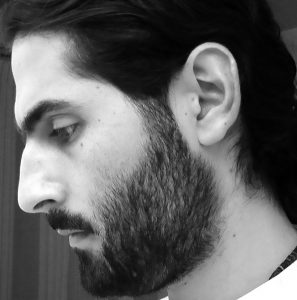 That’s a difficult question to answer for me because I don’t often tie my personal experiences to my work. I immigrated to the U.S. as a teenager and have been straddling two cultures ever since. Yet I don’t feel like I belong fully in either. I suppose this sense of not belonging is pretty common among artists. I’m also a contemplative person by nature and that definitely seeps into my work in big ways. My current worldview is largely informed by science, mathematics and Buddhism. I firmly believe in statistics and coincidence—the business of fate and whatnot makes no sense to me. This has the largest influence on my art by far. A lot of my work has elements of controlled randomness, whether in the decisions surrounding the work, the process of making it or the final result itself.
That’s a difficult question to answer for me because I don’t often tie my personal experiences to my work. I immigrated to the U.S. as a teenager and have been straddling two cultures ever since. Yet I don’t feel like I belong fully in either. I suppose this sense of not belonging is pretty common among artists. I’m also a contemplative person by nature and that definitely seeps into my work in big ways. My current worldview is largely informed by science, mathematics and Buddhism. I firmly believe in statistics and coincidence—the business of fate and whatnot makes no sense to me. This has the largest influence on my art by far. A lot of my work has elements of controlled randomness, whether in the decisions surrounding the work, the process of making it or the final result itself.
Where did you go to school?
I started out taking classes at Northern Virginia Community College when I immigrated here with my family. I transferred to James Madison University to complete my undergraduate and Masters in Music Composition. After that I went on to the University of Maryland to work on my doctorate in Composition with a focus on electronic music, followed by a year-long postdoc at a studio in Paris. That year was very important in that it afforded me a period of incubation and reflection. A lot fell in place for me over the course of that year. I’ve turned to visual and multidisciplinary art recently, and am self-taught—it’s another way I feel like I straddle two cultures, not fully fitting into either. Robert Irwin is another one who’s work and writings resonate with me.
Who were and our your creative influences?
My formal education is in music. My biggest influences for the past decade or so have been Iannis Xenakis and John Cage. They both approached randomness and stochastics from slightly different perspectives. Both worked with processes that removed them from the making of the work, but Xenakis was willing to manipulate the results of his processes to achieve slightly more specific goals, while Cage was willing to completely surrender the results to the processes that yielded them. My aesthetic falls somewhere between the two.
You mentioned that the Myths of Creation series was influenced by images from the Hubble telescope. Can you talk more about how scientific thought has impacted your art?
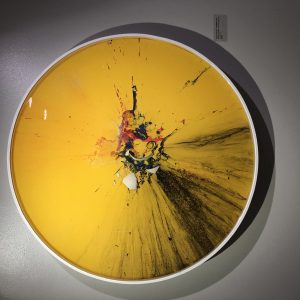 Science has had a huge impact on my thinking, both in art and in life. My work isn’t scientific per se, but definitely inspired by certain principals like systems theory, swarm intelligence, and game theory. I also use technology in some of my work, but there’s nothing particularly unusual about that. When the Hubble images started coming out, I became obsessed. The caption on one simply noted the distance of the exploding star in the image, and it was something in the hundreds of millions of light years away. Aside from being a staggeringly impossible number to fathom, there was something profound and a bit sad and poetic about it: what I was looking at was an event that happened some hundreds of millions of years ago, yet somehow we’re now witnessing it.
Science has had a huge impact on my thinking, both in art and in life. My work isn’t scientific per se, but definitely inspired by certain principals like systems theory, swarm intelligence, and game theory. I also use technology in some of my work, but there’s nothing particularly unusual about that. When the Hubble images started coming out, I became obsessed. The caption on one simply noted the distance of the exploding star in the image, and it was something in the hundreds of millions of light years away. Aside from being a staggeringly impossible number to fathom, there was something profound and a bit sad and poetic about it: what I was looking at was an event that happened some hundreds of millions of years ago, yet somehow we’re now witnessing it.
Describe the process for creating the Myth of Creation pieces.
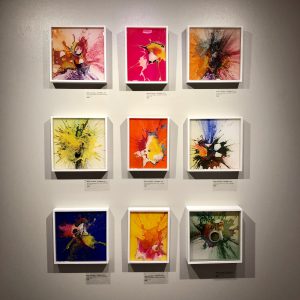 These are pretty involved pieces, and the process has evolved. I start by making the boards and preparing them. Then I make the plaster shells that will hold the pigments. Once all that prep is done, I fill a shell with the various pigments and aggregates. Here I have some measure of control: the order in which I put the material into the shell has some effect on the final result. I’ve built a special enclosure for this step because once I make the drop, the piece has to stay in place until it dries, then I have to spray it with fixative before I can handle it. Because I use powder pigments, I had to come up with a way to spry the fixative indirectly so that it doesn’t blow the powders away. After all that, I add the frame, seal the edges, and pour the resin. The process can take a week or more, yet the actual drop itself happens in a split second. And it’s by far the most exciting part of the process!
These are pretty involved pieces, and the process has evolved. I start by making the boards and preparing them. Then I make the plaster shells that will hold the pigments. Once all that prep is done, I fill a shell with the various pigments and aggregates. Here I have some measure of control: the order in which I put the material into the shell has some effect on the final result. I’ve built a special enclosure for this step because once I make the drop, the piece has to stay in place until it dries, then I have to spray it with fixative before I can handle it. Because I use powder pigments, I had to come up with a way to spry the fixative indirectly so that it doesn’t blow the powders away. After all that, I add the frame, seal the edges, and pour the resin. The process can take a week or more, yet the actual drop itself happens in a split second. And it’s by far the most exciting part of the process!
The series created with synthetic wax – She Who Makes the Moon the Moon is inspired by a poem? Can you talk more about that? How is literature and poetry important to work as an artist?
 A lot of artists find inspiration in literature and poetry. My work is not representational and therefore never a literal (no pun intended) translation of whatever inspired it. I often find inspiration in reading stories or poems and equally in reading scientific articles. I think there are tremendous and fertile sources for the imagination in scientific discovery. That series is inspired by a story entitled “The Distance to the Moon,” from Italo Calvino’s Cosmicomics. Calvino takes modern scientific knowledge, mostly about the formation of the universe, and retroactively creates fantastical stories and myths that work with them in beautiful ways. It pains me when people describe science as cold. The scientific method may be disinterested in how we feel about it, but the creative spark that sets a scientist’s mind on some hypothesis is the same one that every artist and poet feels. It’s a human spark of curiosity about things larger than ourselves that we do not yet understand but might hope to bring forth with a lot of imagination and hard work.
A lot of artists find inspiration in literature and poetry. My work is not representational and therefore never a literal (no pun intended) translation of whatever inspired it. I often find inspiration in reading stories or poems and equally in reading scientific articles. I think there are tremendous and fertile sources for the imagination in scientific discovery. That series is inspired by a story entitled “The Distance to the Moon,” from Italo Calvino’s Cosmicomics. Calvino takes modern scientific knowledge, mostly about the formation of the universe, and retroactively creates fantastical stories and myths that work with them in beautiful ways. It pains me when people describe science as cold. The scientific method may be disinterested in how we feel about it, but the creative spark that sets a scientist’s mind on some hypothesis is the same one that every artist and poet feels. It’s a human spark of curiosity about things larger than ourselves that we do not yet understand but might hope to bring forth with a lot of imagination and hard work.
How has your background in music composition inspired your work?
A lot of my work is concerned with time and processes that center on the passage or capture of time. Time is an integral part of music—sound is a physical phenomenon that is essentially the propagation of vibrations over distance, something that requires time. I find myself creating works that either freeze time through some process, or require time to unfold. I also find myself applying in my visual works a lot of the same aesthetics I’ve developed in my music: an affinity for controlled randomness, an openness to process, a willingness to follow these highly experimental works wherever they need to go.
Describe the process of making “ Come Closer”
This work was the first in a series based in my obsession with shadows. I had a very specific idea in mind and tested a lot of different materials. I played with paper, glass, even tried making some materials from recipes I found. The look I had in mind was that of thin porcelain with light behind it. My partner Tonya suggested having someone make it and that’s what happened. I sent my designs to a ceramic artist and he slip cast them to my specs. The electronics came next. I designed the sounds I wanted using software I’ve used before with other works but I had to get help from my brother who’s an computer engineer in order to realize the works as standalone objects, each with its own microprocessor. We had to work on translating the code to work with the hardware. I then designed the layout of the boards that would go inside the porcelain boxes—they hold a microprocessor, a small speaker, and an LED strip. The small computer runs a program that controls the sound and light. They both ramp up and down at randomly chosen intervals. Each box emits a single pure tone. The combination of all the boxes together creates a complex sound. The piece is quiet and soft, and like many of my works, it’s meant to invite quieted and contemplation. What I find most poetic about it is that because the boxes are independent of each other and are ramping up and down at random intervals, you’ll never hear the same combination of sounds no matter how long you stand there. But the differences in timing are not so huge as to be immediately noticeable. This means the piece effectively looks simple at first glance but you realize there’s actually a lot more to it when you get to know it. This element of discovery is true of a lot of my work. And probably of me, as well…
When people look at your work, what do you hope they get from it? What kind of reaction were you going for when creating this body of work, and what kind of conversation do you hope it provokes?
I hope my work has an impact on people, an impact that is beyond, or rather before words and conversation, the same kind of impact a beautiful sunset might have on one. I’ve always found beauty like that to hit me almost like a physical punch in the gut. For a moment, words fall away and there’s nothing but you and the object and the bare experience. The mind has been foiled by the surprise, arrested for an instant by the experience and impact of beholding that object. Process is something we can talk about, modify, and improve, but impact is beyond words. I guess if someone looks at my work and is clearly impacted by it but has nothing to say that would be okay with me!
What can viewers and art lovers expect from your work in the future?
I’m hoping to move more in the direction of installation work, especially large-scale installations—that’s the kind of work I find most exciting and engaging. I’m continually looking for ways to better present sonic works, so I’ll continue pursuing that. I’ll also likely continue to explore the works and ideas represented in this show.
May 31st 11am – 12PM Coffee & Conversation with Norma Schwartz
May 4th, 2019 Gallery Reception for Norma Schwartz, Jonathan Ottke and Nataliya Gurshman
You are invited to join us Saturday afternoon for the gallery reception for three outstanding exhibitions at the Rachel M. Schlesinger Concert Hall and Arts Center. The artists will be present between 2 and 4pm to greet the guests and answers questions about their art work.
The shows are currently public and will run through June 9th, 2019.
Gallery Hours are Monday – Friday 10AM – 5PM
The exhibitions are as follows:
shape of memories: sculpture by Norma Schwartz
Margaret W. & Joseph L. Fisher Art Gallery
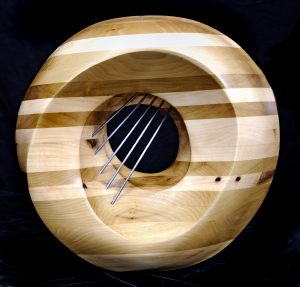
In a Drop of Water: Photographer by Jonathan Ottke
Passage Gallery
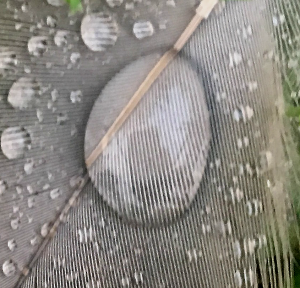
My Russian Soul: Paintings by Nataliya Gurshman
Forum Gallery

April 16th, 2019 6:30-8:30PM Confluence: Two Rivers, One City
During the last week of “Coming to Light, Encaustics by Angela White” and “NOMAD, The Art of Alonzo Davis“, the Schlesinger Art Galleries is hosting a special public presentation of Confluence 2019, the DC region’s annual publication of critical writing on the visual arts on Tuesday evening from 6:30pm The speaker is Phil Hutinet, the publisher of East City Art.
CONFLUENCE: Two Rivers One City Public Presentation
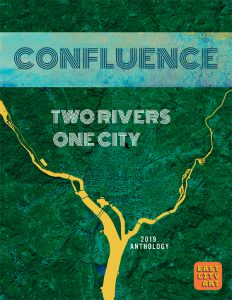 East City Art, DC’s visual arts publication of record, has released its second annual anthology of critical writing titled CONFLUENCE: Two Rivers One City. The 30 essays of the anthology present some of East City Art’s most compelling writing and document the DC region’s most prominent influences on regional visual arts culture.
East City Art, DC’s visual arts publication of record, has released its second annual anthology of critical writing titled CONFLUENCE: Two Rivers One City. The 30 essays of the anthology present some of East City Art’s most compelling writing and document the DC region’s most prominent influences on regional visual arts culture.
The title of the anthology alludes to the confluence of the Potomac and Anacostia rivers which flow through the region affectionately known as the “DMV” (DC, Maryland and Virginia).
CONFLUENCE 2019 offers insight into DC’s art world with in-depth critical writing and full color photographs of work by local, national and international artists displayed at regional galleries, museums and art spaces.
“The dedication of the East City Art writing staff to publish serious art criticism has never been stronger. Articles with ample discussion make ECA an alternative to the condensed and often superficial reviews offered elsewhere of gallery exhibits,” explains Editor-at-Large and Claudia Rousseau, Ph.D.
Publisher Phil Hutinet will present an overview of the reviews in CONFLUENCE 2019 while highlighting examples of work by local artists published in the anthology. During and after the presentation, audience members will have the opportunity to participate in the discussion and ask questions.
Speaker Biography
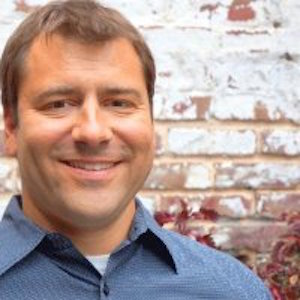 Phil Hutinet, a third generation Capitol Hill resident, is the publisher of East City Art, DC’s Visual Arts publication of record, which he began in 2010. In 2012-2013, his consultancy work east of the river yielded the Anacostia Playhouse, Craig Kraft Studios, the Anacostia Arts Center and the 2012-2013 LUMEN8ANACOSTIA festivals. In 2015, 2018 and 2019 he acted as the Gateway Open Studio Tour coordinator. From 2013-2018, he produced EMULSION, East City Art’s regional juried show and has produced over 150 local exhibitions in his career as a gallery owner and director. Currently, he oversees the ECA Foundation’s Critical Arts Writing and Research Program which produces an annual anthology titled CONFLUENCE: Two Rivers One City. Hutinet has been interviewed by or has made appearances on the BBC, Capital Community News, Euronews, Washingtonian Magazine, Washington City Paper, The Washington Post, WJLA ABC News Channel 7/Channel 8, WTOP and other local, national and international media.”
Phil Hutinet, a third generation Capitol Hill resident, is the publisher of East City Art, DC’s Visual Arts publication of record, which he began in 2010. In 2012-2013, his consultancy work east of the river yielded the Anacostia Playhouse, Craig Kraft Studios, the Anacostia Arts Center and the 2012-2013 LUMEN8ANACOSTIA festivals. In 2015, 2018 and 2019 he acted as the Gateway Open Studio Tour coordinator. From 2013-2018, he produced EMULSION, East City Art’s regional juried show and has produced over 150 local exhibitions in his career as a gallery owner and director. Currently, he oversees the ECA Foundation’s Critical Arts Writing and Research Program which produces an annual anthology titled CONFLUENCE: Two Rivers One City. Hutinet has been interviewed by or has made appearances on the BBC, Capital Community News, Euronews, Washingtonian Magazine, Washington City Paper, The Washington Post, WJLA ABC News Channel 7/Channel 8, WTOP and other local, national and international media.”
